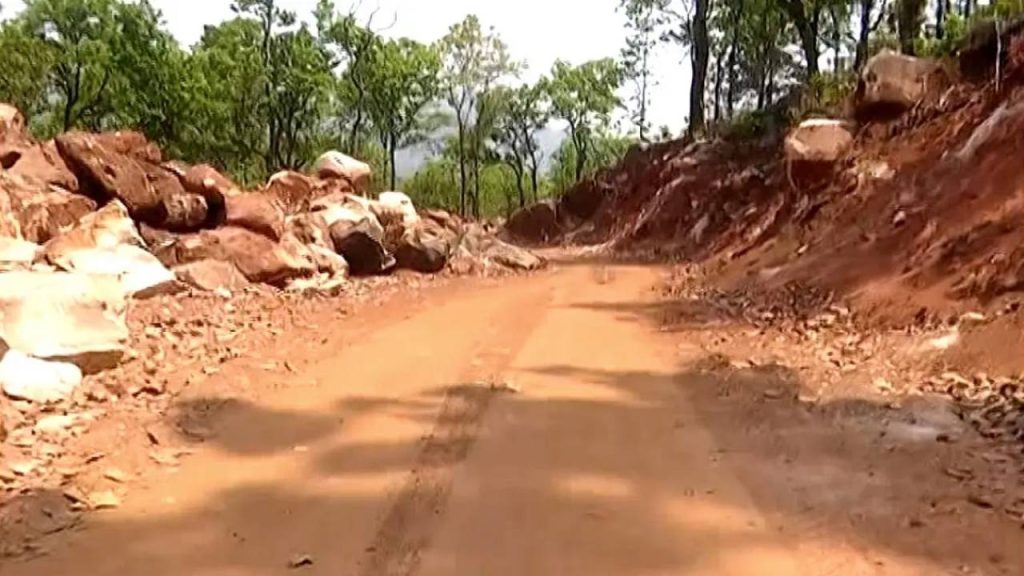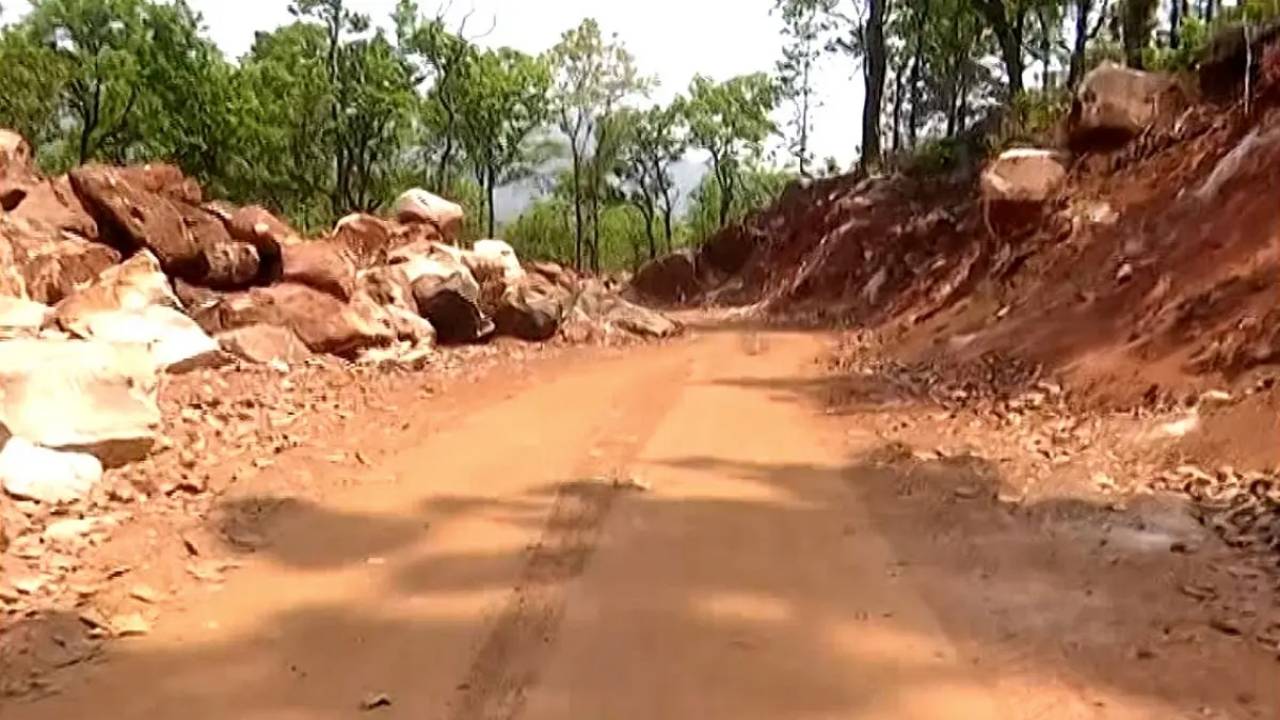When you hear about illegal blasting in Maoist-hit Tulasi Hills, it might sound like something straight out of a crime drama. But sadly, this isn’t fiction—it’s reality. An Andhra Pradesh-based contractor has been caught illegally mining and blasting rocks in Odisha’s Malkangiri district, stirring up trouble in an area already under the shadow of insurgency and law enforcement crackdowns.

Not only does this shake up the environment and local communities, but it also raises serious concerns about security, revenue loss, and governance. If you’re wondering how illegal mining like this happens, why it matters, and what can be done, grab a cup of coffee (or sweet tea if you’re from the South) and let’s break this down.
Illegal Blasting Rocks Maoist-Hit Tulasi Hills
| Topic | Details |
|---|---|
| Location | Tulasi Hills, Malkangiri district, Odisha (Maoist-affected zone) |
| Company Involved | Andhra Pradesh-based contractor |
| Illegal Activity | Unauthorized stone blasting, mining, and crushing |
| Authorities Involved | Odisha Department of Steel & Mines, State Pollution Control Board |
| Impact | Revenue loss for Odisha, environmental damage, heightened Maoist concerns |
| Recent Action | Joint raid stopped operations; show-cause and penalty notices to be issued |
| Official Reference | Odisha Government Steel & Mines Department |
The case of illegal blasting in Maoist-hit Tulasi Hills is more than just a story about rocks. It’s a wake-up call about how weak oversight, corporate greed, and negligence can put entire regions at risk. From harming the environment to endangering security, the fallout is massive.
If Odisha wants to protect its natural wealth and its people, it must tighten enforcement, empower communities, and hold violators accountable. Because at the end of the day, the hills aren’t just piles of stone—they’re homes, histories, and hopes.
Why Illegal Blasting in Tulasi Hills Matters
Let’s get real for a moment. Illegal mining isn’t just about stealing rocks. It’s about:
- Environmental destruction – blasting harms hills, forests, and local ecosystems.
- Revenue loss – states like Odisha lose millions in royalties and taxes.
- Security risks – in Maoist areas, illegal money flows can fuel insurgency.
- Public trust – when companies break rules, communities feel betrayed.
Tulasi Hills isn’t your average mining zone—it’s a sensitive area where even the smallest disturbance can snowball into big security issues. Think of it like ignoring a small crack in a dam—it may not seem huge at first, but if left unchecked, it can bring a flood.
What Happened in Tulasi Hills?
Here’s the scoop:
- A contractor from Andhra Pradesh set up shop in Tulasi Hills, supposedly for road construction.
- Instead of sticking to the plan, they installed a stone crusher and started illegal blasting.
- No permits. No official leases. No environmental clearances. Nada.
- Authorities only caught on after local reports and a joint raid.
During the raid, officials found piles of mined rocks and crushed materials, proving the operation wasn’t just in its “trial phase.”
This is like telling your parents you’re just “testing out” their car in the driveway—when in reality, you’ve been driving it down the interstate.
The Bigger Picture: Maoist-Affected Zone
Tulasi Hills isn’t just any random spot on the map. It’s a Maoist-hit region, where security forces and insurgents often clash. Any unauthorized activity here—especially blasting—rings alarm bells.
Why? Because:
- Illegal mining means cash flow without oversight.
- That money can fund extremist activities.
- Blasting close to a BSF (Border Security Force) camp puts both civilians and troops at risk.
This isn’t just about rocks—it’s about national security.
Environmental and Community Impact
Now, let’s talk about the land and people. Illegal blasting is a double whammy:
- Environmental Damage
- Hills lose their natural shape.
- Forest cover reduces.
- Noise and dust pollution skyrocket.
- Community Harm
- Tribals and locals lose their ancestral land.
- Water sources get contaminated.
- Traditional farming and livelihoods suffer.
According to a 2019 UN Environment Programme (UNEP) report, illegal mining is one of the world’s most destructive underground economies, costing countries billions while displacing communities (UNEP Mining Report).
Legal and Regulatory Oversight
So, how did this even happen? Don’t we have laws?
Yes, India has strict mining rules under the Mines and Minerals (Development and Regulation) Act, 1957, along with state-level laws. But loopholes and weak enforcement mean contractors often:
- Exploit the guise of construction projects.
- Avoid mandatory clearances from the Pollution Control Board.
- Ignore Consent to Establish (CTE) and Consent to Operate (CTO) requirements.
In Tulasi Hills, the Andhra firm failed to produce even basic documents. This shows how enforcement gaps let such activities go on for months without detection.
Practical Guide: How Illegal Mining Affects Everyone
To make it crystal clear, let’s break down how this affects different groups:
For Local Communities
- Loss of land, forests, and water.
- Health problems due to dust and blasting.
- Increased Maoist violence risks.
For the Government
- Loss of millions in revenue from royalties and taxes.
- Costs of additional law enforcement and raids.
- Damaged reputation for weak enforcement.
For Citizens Across India
- Illegal mining inflates black money circulation.
- Creates unsafe, unregulated supply chains.
- Fuels organized crime and sometimes terrorism.
What Needs to Change?
Here’s some straight talk:
- Stronger Enforcement – Regular monitoring and drone surveillance of Maoist-hit areas.
- Community Involvement – Empower tribal communities to report violations.
- Technology Use – Use satellite tracking to detect unauthorized blasting.
- Transparent Permits – Online, trackable permits for construction and mining.
- Swift Legal Action – Heavy penalties and blacklisting for violators.
Just like in the U.S., where agencies like the EPA (Environmental Protection Agency) crack down on polluters (EPA official site), Odisha needs a tough watchdog system.
Blast on Odisha Railway Track: Maoists Claim Responsibility, Trains Halted
‘Shaheed Saptah’ Observed by Maoists with Posters in Odisha-Telangana-Jharkhand Border Area
Vedanta Launches Mobile Health Unit to Bring Healthcare to Rayagada and Kalahandi
FAQs
1. Why is illegal blasting such a big issue?
Because it damages the environment, causes revenue loss, and worsens security risks—especially in sensitive zones like Tulasi Hills.
2. How do authorities usually catch such activities?
Through raids, local reports, satellite tracking, and joint operations between mining and pollution control departments.
3. Can illegal mining really fund Maoist insurgency?
Yes. Illegal cash flow from unregulated mining often supports extremist networks, making it both an environmental and security issue.
4. What laws regulate mining in India?
The Mines and Minerals (Development and Regulation) Act, 1957 and respective state mining acts regulate mining, requiring multiple permits.
5. What can communities do to protect themselves?
Stay vigilant, report suspicious blasting or mining, and work with NGOs and local authorities to demand accountability.





